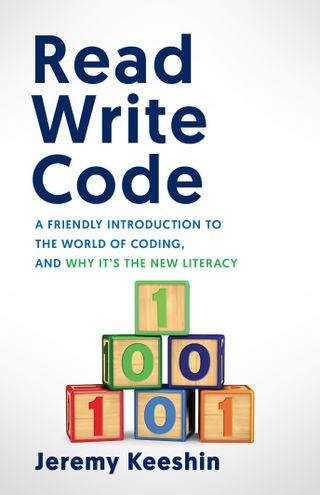Tech literacy is the language of the future, says Jeremy Keeshin, co-founder and CEO of CodeHS and author of the recently released book Read Write Code!
In his new book, Keeshin gives a primer for the world of computers, explaining the basic building blocks of programming, the internet, data, Apple, the cloud, algorithms, and more.
He believes that everyone, regardless of their career goals or interest, should be educated in tech literacy in today’s world. Here are his tips for educators on how to develop their own tech literacy and share that knowledge with students.
1. Tech Literacy Today is Similar To Actual Literacy in the Past
“Reading and writing, those are kind of core foundational skills, you expect students to know how to read and write,” Keeshin says. “It doesn't mean you have to be a professional reader or writer, but you use those skills all the time. Five hundred years ago most people couldn't read or write, and they were like, ‘What am I missing?’ But now we look back on that and go, ‘Of course, you need to read and write.’”
He adds, “The printing press then caused an inflection, an explosion of literacy. And I think with computing, with the internet, we're at a similar inflection point.”

2. Tech Literacy Isn’t About Becoming a Programmer
Thinking that students should learn programming in order to become programmers is a common misconception, says Keeshin. “You can take what you learn in coding and programming and apply it to any area,” he says. “You can apply it to the medical field, the health field, you can apply it to the media or journalism, you can apply it to gaming, or you could apply it to athletics or whatever you can come up with.”
Coding is already intersecting with most professions and that this intersection will only grow in the future, he says.
3. Tech Literacy Is Critical For Everyone
One of Keeshin’s main goals with his book is to show students and educators that achieving tech literacy is easier than they think.
“Usually we have these associations, ‘Coding, computer science -- that's not for me. I can't do that,’” Keeshin says. “We want to dispel that notion. We want to say, ‘Hey, actually, you can do it. It's not that hard to get started.’ And in today's day and age, you don't have an option not to if you want to understand what's going on around you.”
4. It’s Never Too Late to Learn Tech Literacy
For educators looking to increase their own knowledge of tech literacy skills such as coding, Keeshin says the secret is starting small. In the book, he takes readers through the basic building blocks of computing. “It goes, ‘Okay, there's bits and bytes, and how does that make up the language of computing? And what is coding? How do you use those to build apps or websites?’ And then we go into cybersecurity and AI,” he says.
Educators can also take part in various trainings offered by CodeHS and others. Whether someone is a beginner or looking to increase their abilities in a new coding language, Keeshin says the best way to learn is to “Dive in and try it.”
5. Districts Should Have Thoughtful Tech Literacy Programs
To create an effective tech literacy program, districts need to know the skills of their teachers and students. Continuing education opportunities should be afforded to educators, and tech leaders should take time to see where students are, and thoughtfully plan the sequence of courses.
“Do you have students who are new to coding, or have they been doing it for a few years?” Keeshin asks. Depending on the answer to those questions, it may mean that what your high school pathway looks like today is different than what it looks like in a couple years after a full K-12 tech literacy program has been implemented. “Because today, maybe it's their first course,” he says. “But maybe in a couple years, it's their third or fourth course.”


